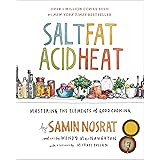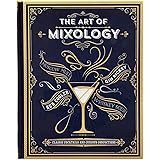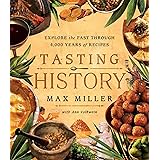Crafting a nutritious, compliant alkaline vegan meal is highly achievable, as the video above expertly demonstrates. This approach integrates plant-based principles with specific alkaline dietary guidelines. Understanding the rationale behind each ingredient choice elevates mere cooking to strategic nutritional planning.
Deconstructing the Alkaline Vegan Philosophy
The alkaline diet prioritizes foods that produce an alkaline ash residue upon digestion. This theory posits that maintaining optimal pH balance is crucial for cellular health. Certain foods are considered acid-forming, while others are alkalizing.
Alkaline Principles and Ingredient Selection
Adherence to an alkaline diet often involves specific ingredient exclusions. Garlic, for instance, is typically omitted due to its perceived acid-forming properties. Similarly, soy products are frequently substituted.
Conceiving an alkaline vegan meal necessitates careful selection. Whole, unprocessed plant foods form the bedrock of this dietary regimen. This ensures maximum nutrient bioavailability and minimized metabolic load.
Optimizing Core Components: Chickpeas and Quinoa
The foundation of a satiating alkaline vegan meal often begins with robust protein and complex carbohydrates. Chickpeas and quinoa fulfill these roles with exceptional efficacy. Both offer comprehensive nutritional profiles.
Chickpea Preparation for Enhanced Texture
Rinsing canned chickpeas thoroughly eliminates excess sodium and improves texture. Roasting or air frying them at 400 degrees achieves a delightful crispness. This process enhances their palatability significantly.
Seasoning chickpeas with alkaline-friendly spices is paramount. Imagine if unseasoned chickpeas lacked their characteristic savory appeal; flavor is essential. Utilizing avocado oil offers a stable, healthy fat source for roasting.
Quinoa: A Complete Alkaline Protein Source
Quinoa is a pseudocereal recognized for its complete amino acid profile. Rinsing it before cooking removes saponins, preventing a bitter taste. This ensures a clean, earthy flavor.
Using a vegetable bouillon in quinoa preparation infuses profound umami. Selecting low-sodium, organic bouillon maintains the alkaline integrity. Consequently, the quinoa becomes a flavorful and nutrient-dense base.
Integrating Vibrant Greens and Fungi: Kale and Mushrooms
Leafy greens and culinary mushrooms are indispensable in an alkaline vegan meal. They provide essential vitamins, minerals, and unique phytochemicals. These ingredients contribute substantially to overall wellness.
Kale: The Nutrient Powerhouse
Kale, a cruciferous vegetable, is rich in vitamins K, A, and C. It also provides significant amounts of antioxidants and anti-inflammatory compounds. Thoroughly cleaning and picking kale leaves removes fibrous stems.
Sautéing kale briefly with minimal water ensures nutrient retention. This gentle steaming process preserves its vibrant color and delicate texture. Overcooking diminishes its nutritional value significantly.
Mushrooms: Umami Depth and Micronutrient Support
Mushrooms offer a unique savory depth, often termed umami, to any dish. They are also excellent sources of B vitamins and selenium. Incorporating various mushroom types expands the flavor complexity.
Sautéing mushrooms and onions in avocado oil creates a flavorful aromatic base. The caramelization process enhances their natural sweetness. This technique prepares a robust foundation for the kale.
Elevating Flavor with Alkaline-Compliant Condiments
Flavor is paramount in any culinary endeavor, especially within specific dietary frameworks. Substituting common ingredients with alkaline-friendly alternatives maintains dietary adherence. This ensures both taste and compliance.
Coconut Aminos: The Soy-Free Alternative
Coconut aminos serve as an excellent soy-free alternative to traditional soy sauce. It offers a similar savory, umami flavor profile but with a lower sodium content. Many alkaline diets advocate for its use.
Utilizing coconut aminos adds a complex depth to the steamed kale. It enhances the dish without introducing common allergens or acid-forming components. This strategic substitution is a cornerstone of alkaline cooking.
Homemade Vegan Cheese: A Holistic Enhancement
The inclusion of a homemade vegan cheese elevates the meal significantly. This provides a creamy texture and rich flavor without dairy or processed ingredients. Imagine a meal lacking this comforting element; it would feel less complete.
Typically, these cheeses are made from nuts or seeds, further boosting nutrient density. They are formulated to be alkaline-friendly, avoiding acidifying components. This addition ensures a comprehensive and satisfying alkaline vegan meal.
Strategic Meal Integration for Sustained Wellness
Preparing this quick and easy alkaline vegan meal transcends simple recipe execution. It represents a commitment to holistic wellness and proactive dietary management. Such meals form the bedrock of a balanced lifestyle.
Regular incorporation of alkaline vegan meals supports sustained energy levels. Furthermore, it aids in maintaining optimal digestive health. This structured approach to eating contributes positively to overall vitality.











